The NVIDIA GeForce RTX 2070 Super & RTX 2060 Super Review: Smaller Numbers, Bigger Performance
by Ryan Smith on July 2, 2019 9:00 AM EST- Posted in
- GPUs
- GeForce
- NVIDIA
- Turing
- GeForce RTX
Meet the GeForce RTX 2070 Super & RTX 2060 Super
Taking a closer look at the RTX 2070 Super & RTX 2060 Super Founders Edition cards, there aren’t too many surprises to be found. Since we’re dealing with a mid-generation kicker here, NVIDIA has opted to stick with their original RTX 20 series reference designs for the new cards, rather than design wholly new boards. This has allowed them to get the new cards out relatively quickly, and to be honest there’s not a whole lot NVIDIA could do here that wouldn’t be superficial. As a result, the RTX 2070 Super and RTX 2060 Super are more or less identical to the RTX 2080 and RTX 2060 respectively.
| GeForce RTX 20 Series Card Compariaon | ||||||
| RTX 2070 Super Founders Edition |
RTX 2070 Super (Reference Specs) |
RTX 2060 Super Founders Edition |
RTX 2060 Super (Reference Specs) |
|||
| Base Clock | 1605MHz | 1605MHz | 1470MHz | 1470MHz | ||
| Boost Clock | 1770MHz | 1770MHz | 1650MHz | 1650MHz | ||
| Memory Clock | 14Gbps GDDR6 | 14Gbps GDDR6 | 14Gbps GDDR6 | 14Gbps GDDR6 | ||
| VRAM | 8GB | 8GB | 8GB | 8GB | ||
| TDP | 215W | 215W | 175W | 175W | ||
| Length | 10.5-inches | N/A | 9.0-inches | N/A | ||
| Width | Dual Slot | N/A | Dual Slot | N/A | ||
| Cooler Type | Open Air (2x Axial Fans) |
N/A | Open Air (2x Axial Fans) |
N/A | ||
| Price | $499 | $499 | $399 | $399 | ||
As I noted earlier, the Founders Edition cards themselves are now purely reference cards. NVIDIA isn’t doing factory overclocks this time around – the high reference clock speeds making that process a bit harder – so these cards are very straightforward examples of what the RTX 2070 Super and RTX 2060 Super can deliver in terms of performance. It also means that these cards no longer carry a price premium, with NVIDIA selling them at the $499 and $399 MSRPs respectively.
Starting with the RTX 2070 Super then, possibly the only material change is quite literally in the materials. NVIDIA has taken the 2080 reference design and given the center segment of shroud a reflective coating. This, along with the Super branding, are the only two visually distinctive changes from the RTX 2080 reference design. For better or worse, the reflective section is every bit the fingerprint magnet that you probably expect, so thankfully most people aren’t handling their video cards as much as hardware reviewers are.
In terms of cooling then, this means the RTX 2070 Super gets the RTX 2080’s cooler as well. At a high level this is a dual axial open air cooler, with NVIDIA sticking to this design after first introducing it last year. The open air cooler helps NVIDIA keep their load noise levels down, though idle noise levels on all of the RTX 20 series reference cards has been mediocre, and the new Super cards are no different. The fact that this reference design isn’t a blower means that the RTX 2070 Super isn’t fully self-exhausting, relying on the computer chassis itself to help move hot air away from the card. For most builders this isn’t an issue, but if you’re building a compact system or a system with limited airflow, you’ll want to make sure your system can handle the heat from a 215W video card.
Under the hood, the RTX 2070 Super inherits the RTX 2080’s heatsink design, with a large aluminum heatsink running the full length of the card. Deeper still, the heatsink is connected to the TU104 GPU with a vapor chamber, to help move heat away from the GPU more efficiently. Overall the RTX 2070 Super has the same 215W TDP as the RTX 2080, so it behaves virtually identically to the latter card. Which is to say that it has no problem keeping its cool.
Since this card is needed for further testing I haven’t shucked the card down to its PCB, but according to NVIDIA the power delivery system is also identical to the RTX 2080. In this respective NVIDIA’s reference designs are solid, and while they won’t be enough for hardcore overclockers, it’s more than sufficient for the kind of overclocking that can be done with the reference cooler. Of particular note, the maximum power target for the card is +20%, which means it can have its TDP increased to 258W. Accordingly, the card is fed by the same 6pin + 8pin power system as on the RTX 2080, more than guaranteeing the card can be fed up to its power target limit.
Finally, for display I/O, the card gets the continuing NVIDIA high-end standard of 3x DisplayPort 1.4, 1x HDMI 2.0b, and 1x VirtualLink port (DP video + USB data + 30W USB power).
GeForce RTX 2060 Super
Shifting gears, for building the RTX 2060 Super NVIDIA has gone the opposite direction, using the RTX 2060 reference design as the base. The 2060 itself wasn’t all that different from the 2080 – and the same holds for its Super variant – but there are a few notable distinctions from the newly minted RTX 2070 Super.
In terms of overall design, the RTX 2060 Super Founders Edition card retains the same design aesthetic – reflective bits and all – but it comes in a smaller package. Overall the card is just 9 inches long, which is 1.5 inches shorter than the RTX 2070 Super. The cooling system has also been simplified a bit – mostly forgoing the vapor chamber – though it still retains the card’s full-body heatsink and dual fan open air cooler.
With a 175W TDP, the card relies on a single 8pin PCIe power connection at the rear of the card for the extra power it needs. Overclockers meanwhile will be able to pump up the power target by 22%, allowing the card’s TDP to be raised to a maximum of 213W.
Outside of its smaller stature, the other big departure for the RTX 2060 Super from its more powerful sibling is in the display I/O configuration. As with the regular RTX 2060, the Super card drops the 3rd DisplayPort for a DL-DVI-D port, giving the card a final tally of 2x DisplayPort 1.4, 1x HDMI 2.0b, 1x DL-DVI-D, and a sole VirtualLink port.


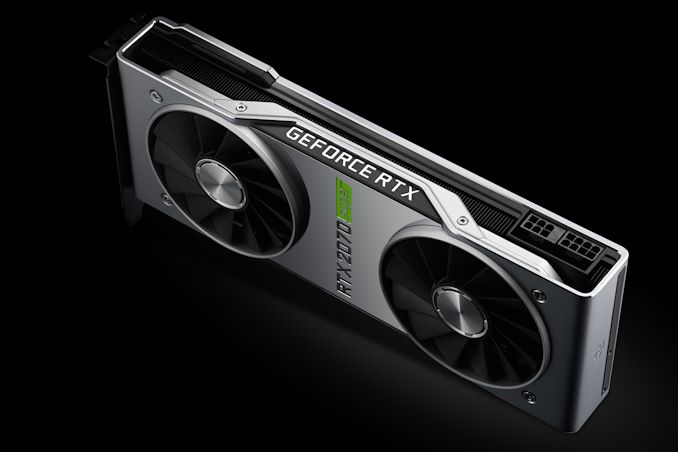
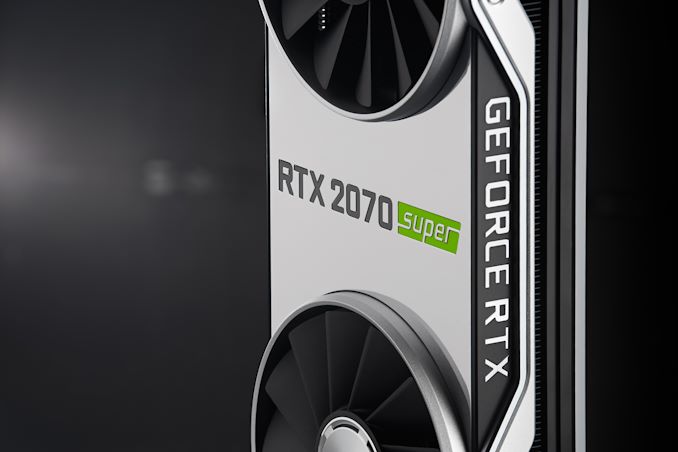
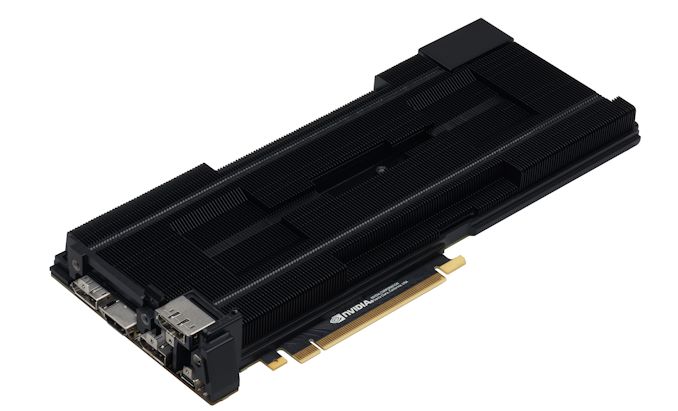

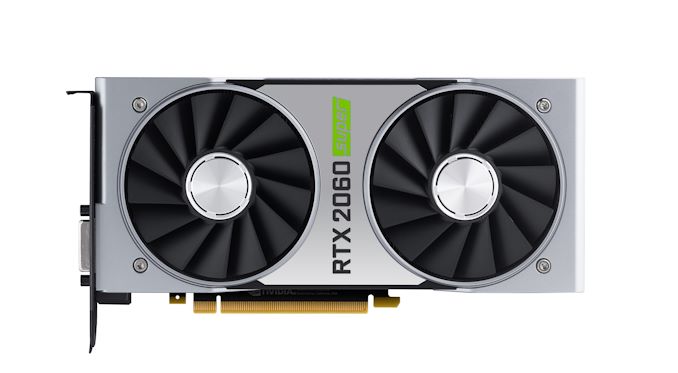
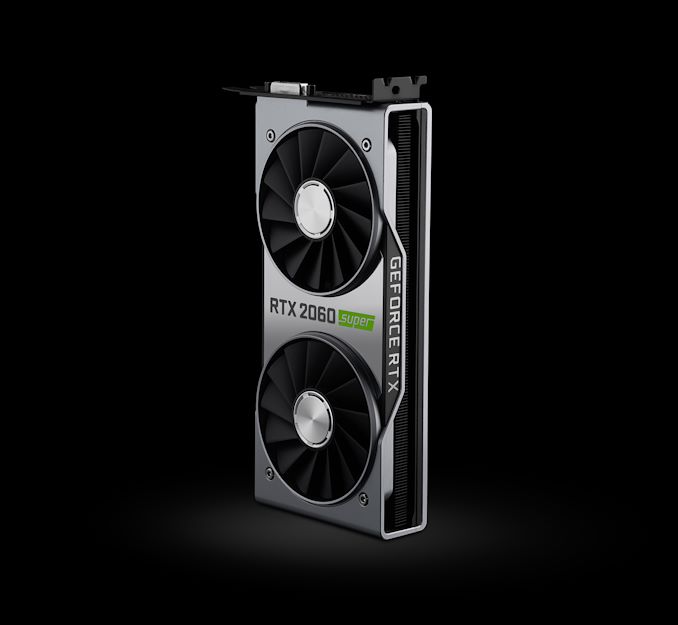









281 Comments
View All Comments
eva02langley - Tuesday, July 2, 2019 - link
At this point, until a GPU overhaul is made like Zen was for the CPU space, we are not going to see much changes. AMD will need to introduce chiplet design gpus for things to really change.sing_electric - Tuesday, July 2, 2019 - link
How would a chiplet design really help GPUs, though? You don't have nearly the kind of I/O requirements on-chip for a GPU as you do a CPU. You're already massively parallel, and you can just shut off defective "cores" and put those parts in a lower bin; going to a 2 (or more) chip setup would probably just hurt performance.eva02langley - Tuesday, July 2, 2019 - link
By making smaller chips, better yield, better binning, reducing waste... on multiple product.It is like designing a frame for multiple car model assembly. You are cutting cost and end up with better quality products...
Why chiplets? It is obvious as a business strategy.
jordanclock - Tuesday, July 2, 2019 - link
If it's obvious, then I'm sure AMD has considered it and decided it doesn't make sense.Why does everyone in the comments act like they know better than entire teams of the world's best engineers?
Kevin G - Tuesday, July 2, 2019 - link
Chiplets require more expensive packaging and to really scale, you have to design with that concept in mind. Previously the cost-benefit from an engineering standpoint was simply to eat the cost going with larger dies and release harvested products due to the rarity of fully functional chips. The costs to migrate to newer nodes is increasing and the necessity of using multi-patterning have put tighter limits on how big chips can be. Chiplets are the way forward as they solve the current issues in manufacturing and the packaging doesn't carry the same premium as before.Gastec - Wednesday, July 17, 2019 - link
Chiplets and multi-GPU configs FTW! Also convince the electric companies to reduce the electricity bill by 50% :)Yojimbo - Tuesday, July 2, 2019 - link
I don't think a chiplet would help a consumer GPU much. Chiplets allow you to put more transistors than you otherwise would be able to. But consumer GPUs don't reach the reticle limit. More transistors would also increase the price of the GPUs. The cost per transistor isn't going down as much from node to node as it used to. So if AMD tried to boost performance by building a big chip with multiple chiplets it would be very expensive not only because of the complexity of chiplet technology but also because of the cost of all those transistors.What AMD needs to do is to continue to modify their architecture. The RDNA is a good first step. It's still behind NVIDIA in memory bandwidth, energy, and workload efficiency, but it looks like it makes a good jump over GCN in those areas.
eva02langley - Tuesday, July 2, 2019 - link
Seriously... everything you are saying is only your opinion. Chiplet is bringing better yield, better binning, reduce waste and end up giving more margins due to modularity.As of now, we have no clue what RDNA can provide, the reviews are not even out yet and it is the first kick at the can. If all the game industry is backing up AMD, guess what, there must be a reason for it.
Yojimbo - Wednesday, July 3, 2019 - link
Chiplets bring better yields, yes, but at the expense of worse power efficiency. If you put the chiplets on silicon interposers it's very expensive, too. So you must put them on less expensive subtrate and that affects the communication speed. Maybe when the technology is more mature it could make sense, but there's no sense to introduce the complexity now. In any case, AMD fans talk about chiplets as if AMD is the only one pursuing them. The whole industry is. Intel, AMD, NVIDIA,TSMC, everybody.Why do you say the game industry is "backing up AMD"? What does that mean?
Meteor2 - Saturday, July 6, 2019 - link
Everything Yojimbo says is fact; eva02 you're clearly very poorly informed.